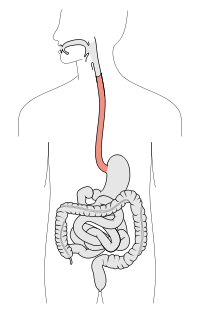
Photo from wikipedia
Introduction The remedē System (Respicardia, Inc., Minnetonka, MN), a transvenous phrenic nerve stimulation (TPNS) device that treats central sleep apnea, consists of an implantable pulse generator and a stimulation lead.… Click to show full abstract
Introduction The remedē System (Respicardia, Inc., Minnetonka, MN), a transvenous phrenic nerve stimulation (TPNS) device that treats central sleep apnea, consists of an implantable pulse generator and a stimulation lead. Stimulation captures the phrenic nerve to contract the diaphragm and expand the lungs similar to normal inspiration. Stimulation lead impedance is checked by the TPNS device to ensure proper therapy delivery. Changes in impedance are constantly evaluated by the system, which then adjusts stimulation current to maintain effective therapy. Patients who experience acute decompensated heart failure (ADHF) retain excess fluid with resultant reduction in thoracic impedance. Hypothesis Thoracic impedance changes due to ADHF can be detected by TPNS lead measurements. Methods A 73 yo male patient with a TPNS system implanted as part of the remedē System Pivotal Trial was hospitalized with ADHF. TPNS device data was examined pre and post hospitalization to asses changes in lead and transthoracic impedance. Results The patient was hospitalized with ADHF for administration of IV diuretic therapy following 3-4 weeks of progressively worsening dyspnea and weight gain. Daily mean lead impedances started to decrease 3 weeks prior to the admission, starting near 750 ohms and reaching a nadir 50 ohms 3 weeks prior, dropping quickly to Conclusion HF decompensation results in decreased lead impedance due to fluid accumulation, but the TPNS device's constant current feature maintains stimulation therapy, as this case demonstrates. While at the present time the system does not alert for potential HF decompensation, consistent detection of impedance changes during HF events should allow TPNS devices to serve as diagnostic tools similar to other cardiac rhythm management (CRM) devices. If HF diagnostics are embedded in future versions of TPNS systems, HF monitoring may be available to patients who otherwise do not qualify for CRM devices. Additional diagnostic power may be achieved by integrating metrics of sleep quality that can be detected by TPNS systems.
Journal Title: Journal of Cardiac Failure
Year Published: 2020
Link to full text (if available)
Share on Social Media: Sign Up to like & get
recommendations!